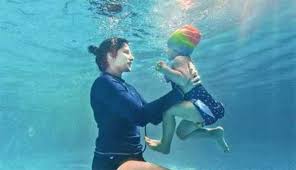Why Water Safety Training Is Non-Negotiable in Australia
Australia’s lifestyle is tightly bound to water. From beaches and backyard pools to rivers and public aquatic centres, swimming is a national pastime. But with that comes responsibility. Drownings remain a leading cause of accidental death in young children, and adults are far from immune. That’s why completing a water safety course isn’t just for lifeguards and swim instructors—it’s a vital life skill.
Whether you’re planning a career in aquatics or just want to feel confident supervising kids around water, a structured course equips you with the knowledge and practical ability to prevent tragedy before it starts.
What a Water Safety Course Actually Teaches You
Forget the old-school image of swimming lessons as just freestyle and backstroke. A proper water safety course is far broader. Participants learn to:
- Recognise hazards in pools, beaches, and open water
- Apply survival swimming techniques
- Use rescue equipment correctly
- Understand CPR and emergency protocols
- Communicate water safety rules clearly
Courses are structured to cater to different ages and skill levels—from foundational safety for children to professional-level training for instructors.
Why Early Exposure to Water Safety Matters
Kids are naturally curious and love the water—but they often don’t perceive danger until it’s too late. That’s why many programs now offer water safety education from as young as six months old. These aren’t conventional swim lessons—they’re about helping infants and toddlers get comfortable in water, float unaided, and learn breath control.
By primary school, children can build on those foundations with formal lessons that combine swimming proficiency with safety awareness.
Evidence backs this up. According to Royal Life Saving Australia, children under five account for over half of all drowning deaths in swimming pools. Structured early education significantly reduces this risk.
Adults Need Water Safety Too
It’s a myth that water safety is only for kids. Many adults never received proper training and overestimate their swimming ability—especially in open water. Whether you’re a new parent, a recreational swimmer, or someone who’s developed a fear of water later in life, enrolling in a water safety course can be transformative.
You’ll gain the practical skills to respond in emergencies, the confidence to supervise children safely, and the competence to swim with awareness and control.
Becoming a Swimming Instructor: Your Step-by-Step Guide
If you’re passionate about teaching and want to make a difference, becoming a certified swimming instructor is a rewarding path. Here’s how it typically unfolds:
1. Complete a recognised water safety course
Start with comprehensive training that includes both theory and practical elements. Look for programs that are nationally accredited and align with aquatic education frameworks in Australia.
2. Gain first aid and CPR certification
You’ll need up-to-date qualifications in first aid, CPR, and sometimes advanced resuscitation to instruct others.
3. Undertake on-the-job practical hours
Most certifications require you to log a minimum number of teaching hours under supervision. This ensures you’re confident in managing groups, communicating clearly, and adapting lessons to different skill levels.
4. Maintain ongoing professional development
Like any education-related role, swim instruction evolves. Refresher training, new techniques, and regular safety updates help you stay current.
Where to Find a Water Safety Course That’s Right for You
There’s a broad network of swim schools and aquatic centres offering certified training across Australia. Many run term-based courses for kids and intensive programs for adults. If you’re looking to become an instructor, you’ll need a pathway that includes both water safety and teaching methodologies.
Here are some things to consider when choosing a course:
- Is it recognised by national swimming bodies?
- Does it include both pool and open water training?
- Are the instructors qualified and experienced?
- Does it fit your schedule and location?
Check course outlines carefully, and don’t be afraid to ask about assessment criteria, support resources, and accreditation.
Who Should Consider Taking One?
A water safety course isn’t just for those entering the aquatics industry. It’s for:
- Parents of young children
- School teachers and childcare educators
- Sports coaches and camp organisers
- Tour guides, surf instructors, and fitness trainers
- Anyone living near coastal or riverine areas
Having even one person trained in water rescue and CPR in a group can be the difference between a close call and a tragedy.
A Final Word on Lifesaving Skills
Whether you want to be a swim coach or simply safeguard your family, water safety skills are non-negotiable. A structured, nationally recognised water safety course provides the confidence and capability to act when it counts.
Courses are widely available, accessible to all ages, and delivered in ways that build both skill and confidence. They offer more than a certificate—they empower you with the ability to save a life.
Take the first step.
Enrol in a water safety course that matches your goals, lifestyle, and location.
If you’re interested in a career teaching others, explore how to become a certified swimming instructor today.
And if you’re not sure where to begin, find a local water safety course that aligns with your level.

